Federal University of Sergipe
| Universidade Federal de Sergipe | |
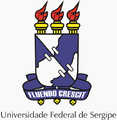 Official Seal | |
Other names | UFS |
|---|---|
| Motto | Fluendo Crescit |
Motto in English | Flowing Growth |
| Type | Public |
| Established | 1967[1] |
| Budget | US$200 million (2011)[2] |
| Rector | Josué Modesto dos Passos Subrinho |
Academic staff |
2,072 non-medical 3,141 total |
Administrative staff |
1,154 241 temporary |
| Students | 30,832 |
| Undergraduates |
29,481 1,171 in extension[3] 6,498 long-distance |
| Postgraduates |
3,461 2503 in master 958 in doctorate |
| Location | São Cristóvão (headquarters), Aracaju, Itabaiana, Lagarto and Laranjeiras, Sergipe, Brazil |
| Campus | Urban |
| Colors |
Blue White |
| Website |
UFS |
The Federal University of Sergipe (Portuguese: Universidade Federal de Sergipe, UFS) is a Brazilian public institution based in Sergipe, with campi sprawling through the cities of São Cristóvão (headquarters), Aracaju, Itabaiana, Laranjeiras and Lagarto. Founded in 1967 by the junction of the State's existing colleges, it became its second university (the first being the University of Tiradentes, a private institution founded in 1962)[4] and its first, and so far only, public one. As traditionally seen in Brazilian educational system, in which state-banked universities tend to offer better quality of education, it became the State's most reputable and disputed[5] higher education institution, ranking among the country's 40 best universities[6] and Latin America's top 200.[7]
History
Sergipe had government permission for higher education schools since the 1920s, but the first institutions of such type - the Faculdade de Ciências Econômicas (in English: College of Economic Sciences) and the Escola de Química (Chemistry School) - would commence activities only in 1948 as independent public colleges. They were followed by the Faculdade de Direito (Law College, 1950), Faculdade Católica de Filosofia (Catholic College of Philosophy, 1950), Escola de Serviço Social (Social Services School, 1954) and the Faculdade de Ciências Médicas (Medical Sciences College, 1961). By then, the State had fulfilled the minimum number of institutions (six) to form a university, which was commissioned in 1963 and approved in 1967 by law decree. Though recognized as a university, the UFS had no proper campus and the departments of its courses were scattered throughout the State's capital, Aracaju.
By 1978, the university had grown to include 23 full-time courses, which resulted in an overwhelming bureaucracy and threats of inefficiency due the institution's decentralized structure. In this very year, attempts to organize the chaotic model, which had similar cases in several other States, were made by the Ministério da Educação (Ministry of Education), whose national guidelines forced universities across the country to unify their courses in "centres". Initially, four centres were created for the UFS: Centro de Ciências Exatas e Tecnologia (Centre of Exact Sciences and Technology - CCET), Centro de Ciências Biológicas e da Saúde (Centre of Biological and Health Sciences - CCBS), Centro de Ciências Sociais Applicadas (Centre of Applied Social Sciences - CCSA) e Centro de Educação and Ciências Humanas (Centre of Education and Human Sciences - CECH).
Following national education reforms, the university began a gradual transference to a new, unified campus in the city of São Cristóvão throughout the 1980s. In 1987, the fully transferred UFS inaugurated its new campus, which would eventually become the institution's headquarters. During the 1990s, following the foundation of 45 new undergraduate courses, there was an emphasis in technology and academic specialization: the Pólo de Novas Tecnologias (Department for New Technologies) was founded, bringing 10 new courses with it, and the Programa de Qualificação Docente (Academic Qualification Program - PQD) was formed, graduating over 1,000 highly apt teachers for the State's public education system in the decade. Also in this period, the university began its first master degree programs through the Department of Post-Graduation and Research. Independent scientific thinking was promoted by the Programa de Iniciação Científica (Scientific Initiation Program), a partnership between UFS and the National Council for Scientific and Technological Development (CNPq).[8]
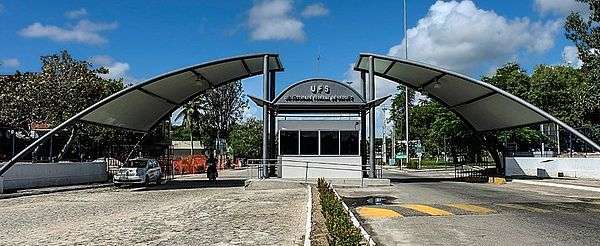
Since 2004, the UFS faced a new and drastic cycle of expansion based in the government's new social policies,[9][10] combining the rise of new courses (19 so far), enlargement of the curricula, reform and expansion of infrastructure. The most notable of such reforms were the foundation of new campi in Itabaiana and Laranjeiras (specialized in Liberal Arts), which were added to the already existing campi in Aracaju and Lagarto (specialized in Medical Studies). Though generally praised for its scope,[11][12] the so-called Expansion Program suffers criticisms ranging from its execution, permeated by bureaucracy and enormous personnel costs, to its efficiency.[13] As of 2012, the university had a total of 107 courses[14] divided in 6 centres.[15]
Admissions
Like most Brazilian universities, admissions to UFS undergraduate courses are made solely by passing the yearly exam popularly known as vestibular. Until 2011, the university independently commissioned the test from Fundação Carlos Chagas (Brazilian institute for academic research) and performed it in four consecutive days (three for each level in Brazilian secondary schools and one for writing). Criticism to such evaluation system is wide and longstanding in the country's history, mostly focusing on the inability to evaluate the student's personality, also ignoring his extracurricular enterprises, the excessive memorization required by the questions and unfairness towards lower-class students, who are unable to pay for better education (the country's primary and secondary public education is notoriously deficient).[16][17][18]

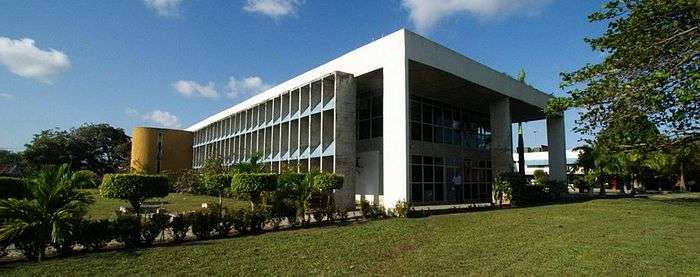
Like most exams in other public universities (with the notable exceptions of ITA and IME), the questions present no particular level of difficulty; the outstanding dispute for vacancies, however, is the decisive factor for selection, given the process' competitive nature. In 2010, a total of 28,340 students competed for 4,950 vacancies (1:5.72 ratio).[19] Differently from admission systems seen in United States, in which the student chooses its line of study usually one year after his matriculation, enrollment to a course is prior the exam's execution, and the student will compete for vacancies only in the chosen course. That makes for highly different competitive ratios ranging from course to course, with some being most disputed (in 2010, medicine and law had 23 and 17 students disputing one vacancy, respectively) and some having a worryingly low demand (in 2010, mathematics had only 12 applicants for 20 vacancies). In order to avoid such discrepancies and most of the problems from the traditional exam, since 2012 UFS has adopted the ENEM (Brazil's SAT-like national exam) as its only form of admission, raising some worries based on the exam's unstable administration.[20]
In 2007, the university adhered to the controversial racial quota system, destining half of its vacancies to public school black students. The decision was added to the ongoing national controversy questioning the system's constitutionality.[21][22] In 2012, Brazil's Supreme Court declared the quota system legal,[23] and it was made into law after President Dilma Rousseff's sanction.[24]
Academics
Primary and Secondary Education
Aside from its higher education curricula, the UFS also ministers primary and secondary education through the Colégio de Aplicação (Application School - CODAP), comprising 550 students: 210 primary ("Fundamental Education", levels 6 to 9, according to Brazilian denomination) and 240 secondary or high-schoolers ("Mid-Level Education", levels 1 to 3). The school was founded in 1959 as part of the Sergipe College of Philosophy (former Catholic College of Philosophy) and was incorporated to the university in 1968. It was transferred to São Cristóvão Campus in 1981, but remained without a proper building until 1994.[25]
The CODAP is the university's take on non-higher public education, a historically deficient system in Brazil. Aside from the usual curriculum, the school invests in extension programs (gathering 160 students in 2012) and the Projects for Scientific Initiation. Its academic staff comprises 30 permanent and 7 temporary teachers, plus 18 employees in the administrative staff. The school ranks as the State's and one of the country's best public schools: in 2012, it had the country's seventh and the State's best primary public education according to the "Índice de Desenvolvimento da Educação Básica" (Primary Education Development Index - INEP).[26][27] In both 2010[28] and 2011,[29] the ENEM ranked its secondary education as the State's sixth best, being the only public school among the top 10.
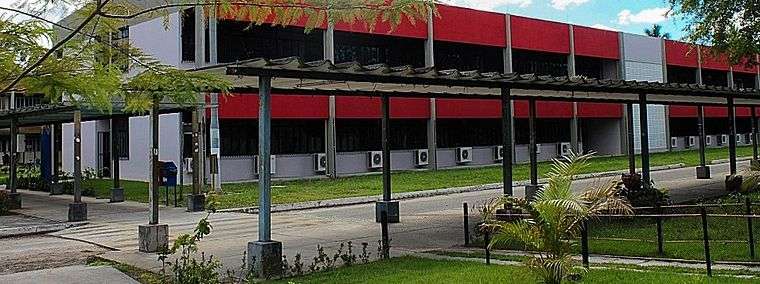
Undergraduate and post-graduation
The UFS is a mid-sized, non-residential university. As of the second semester of 2011, it had a body of 30,832 students divided in 107 undergraduate, 38 master and 8 doctorate courses.[30] The nation's post-graduation quality is evaluated by its Ministry of Education through the "Concept System", which gives a course a grade (called "concept") from 0 to 5. As of 2012, 26 courses were given the "concept" 3 (all masters), 16 received "concept" 4 (7 doctorates and 9 masters) and only one had a perfect 5 (doctorate in Biotechnology). Also in this period, only 4% of all students (1,351) were undergoing post-graduation (1045 in masters and 306 in doctorate).
Residency system is decentralized and coordinated by joint efforts between the university and the State's government. While UFS does possess some residential blocks, the vast majority of the residents lives in third-part houses rented with their financial aid. Only unemployed, lower-class students living far from their respective campi are elegible to the system.[31]
Following the expansion program since 2004, the university sought to reach neighboring cities by constructing the campi of Itabaiana and Laranjeiras and rebuilding the campus of Lagarto. The Laranjeiras Campus, built in "Quarteirão dos Trapiches", the city's historical site, specializes in Liberal Arts and Urban Studies. The new Lagarto Campus, under construction since 2009, is a modern-architecture facility that will house 8 medicine courses. The majority of undergrad students are located in the university's main campus, São Cristóvão (17,559 students), with the other campi housing 2,419 (Itabaiana), 1,543 (Aracaju), 823 (Laranjeiras) and 293 students (Lagarto's old campus).

Rankings
The UFS is a relatively new institution, with less than five decades of existence (Brazil's oldest higher education institution, the Military Institute of Engineering, is 220 years old). Despite its recent origins and the notorious problems faced by Brazilian public education (corruption, embezzlement and excessive bureaucracy among the greatest), the university achieved great notoriety in Brazilian higher education, ranking 39 among the institutions evaluated by Folha's University Ranking (private ranking institution) in the country, 2012, and among Latin America`s top 200 universities by QS World in 2011.
UFS Law School is recognized as one of the country's finest, ranking among the four best results in the OAB Exam (mandatory national exam for Law graduates, administrated by the Order of Attorneys of Brazil) from 2009 to 2012 (first place in 2010 and 2011).[32][33][34][35] In 2012, the Law School received the OAB Quality Seal, given only to those with consistently exceptional performance in the exam.[36]

The university's closest competitor is the private-based UNIT (University of Tiradentes), founded 5 years earlier, in 1962. Under the university's control are various key programs for the State's culture and sports: the Museu de Arqueologia de Xingó (Xingó Museum of Archaeology), with over 55,000 archaeological findings from the Xingó region, the CULTART (foundation for culture and art) and the "Programa UFS em Movimento" (UFS in Motion program), which promotes 28 types of sportive and physical extracurricular activities,[37] to mention some.
Notable Alumni and faculty members
As usually seen in Brazil's higher education, the Federal University of Sergipe, being a state-banked institution, tends to graduate the State's cultural and intellectual elite. It has been the alma mater of 3 governors, 7 mayors of Aracaju (State's capital), one president of the Supreme Court and one Executive Director of the World Bank.
UFS |Department of Economics | Federal University of Sergipe
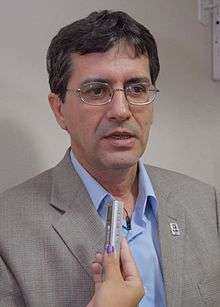 Josué Modesto dos Passos Subrinho Ph.D, Former student of UFS, Economist, Professor of Economics Federal University of Sergipe He is currently Rector of the Universidade Federal da Integração Latino-Americana
Josué Modesto dos Passos Subrinho Ph.D, Former student of UFS, Economist, Professor of Economics Federal University of Sergipe He is currently Rector of the Universidade Federal da Integração Latino-Americana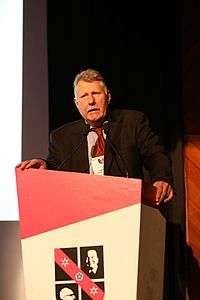
 Tacito Augusto Farias Ph.D, Micro-econometrician, Mathematician ,Professor of Economics Federal University of Sergipe
Tacito Augusto Farias Ph.D, Micro-econometrician, Mathematician ,Professor of Economics Federal University of Sergipe Maria Lucia de Oliveira Falcon Ph.D,Professor of Economics Federal University of Sergipe
Maria Lucia de Oliveira Falcon Ph.D,Professor of Economics Federal University of Sergipe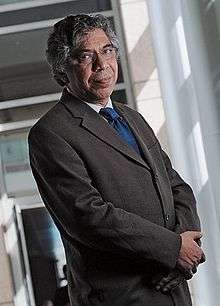 Otaviano Canuto Ph.D,Is a former student of UFS, Macroeconomist, Executive Director of the IMF International Monetary Fund, former Director of the World Bank, Professor of Economics University of São Paulo
Otaviano Canuto Ph.D,Is a former student of UFS, Macroeconomist, Executive Director of the IMF International Monetary Fund, former Director of the World Bank, Professor of Economics University of São Paulo Dean Lee Hansen Ph.D,Professor of Economics Federal University of Sergipe
Dean Lee Hansen Ph.D,Professor of Economics Federal University of Sergipe
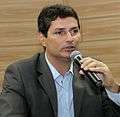

 Christiane Senhorinha Soares Campos Ph.D,is a Economist, Journalist ,Professora of Economics Federal University of Sergipe
Christiane Senhorinha Soares Campos Ph.D,is a Economist, Journalist ,Professora of Economics Federal University of Sergipe
UFS | Department of Medicine | Federal University of Sergipe
 Drª.Marina Caskey MD,Former student of UFS, Attending Physician - Assistant Professor in Clinical The Rockefeller University
Drª.Marina Caskey MD,Former student of UFS, Attending Physician - Assistant Professor in Clinical The Rockefeller University Dr.Edvaldo Nogueira MD (1961–present): politician, Mayor of Aracaju (2006 - 2012), Medical Student of UFS.
Dr.Edvaldo Nogueira MD (1961–present): politician, Mayor of Aracaju (2006 - 2012), Medical Student of UFS. Dr.Eduardo Amorim MD, Medical Student of UFS, (1963–present): doctor, politician, Senator (2011 - 2019) and Federal Deputy (2007 - 2011)
Dr.Eduardo Amorim MD, Medical Student of UFS, (1963–present): doctor, politician, Senator (2011 - 2019) and Federal Deputy (2007 - 2011) Dr.Cleovansóstenes de Aguiar MD , doctor, politician, Mayor of Aracaju (1971-1975) and founder of Sergipe Academy of Medicine;
Dr.Cleovansóstenes de Aguiar MD , doctor, politician, Mayor of Aracaju (1971-1975) and founder of Sergipe Academy of Medicine;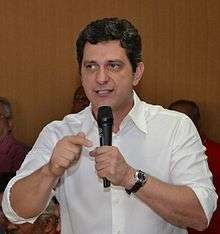 Dr.Rogério Carvalho Santos MD, Medical Student of UFS.
Dr.Rogério Carvalho Santos MD, Medical Student of UFS.
UFS |Department of Law| Federal University of Sergipe
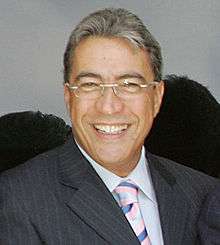 Marcelo Déda Chagas He was mayor of Aracaju from 2000 to 2006, and was elected in 2006 and 2010 as Governor of Sergipe It was a law student at the UFS.
Marcelo Déda Chagas He was mayor of Aracaju from 2000 to 2006, and was elected in 2006 and 2010 as Governor of Sergipe It was a law student at the UFS.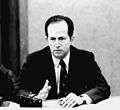 Albano Franco It was a law student at the UFS,(1940–present): entrepreneur, lawyer, politician, Governor (1995 - 2002), Senator (1983 - 1994) and Federal Deputy (2007 - 2010);
Albano Franco It was a law student at the UFS,(1940–present): entrepreneur, lawyer, politician, Governor (1995 - 2002), Senator (1983 - 1994) and Federal Deputy (2007 - 2010);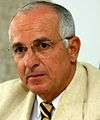 Vladimir Souza Carvalho (1950–present): historian, judge, writer, Desembargador of the Regional Federal Court (5th Region) and member of Sergipe Academy of Literature;
Vladimir Souza Carvalho (1950–present): historian, judge, writer, Desembargador of the Regional Federal Court (5th Region) and member of Sergipe Academy of Literature; Antonio Carlos Valadares He graduated in Industrial Chemistry in 1967 and in Law in 1974 - UFS
Antonio Carlos Valadares He graduated in Industrial Chemistry in 1967 and in Law in 1974 - UFS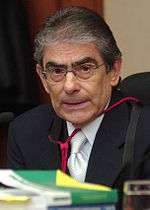 Carlos Ayres Britto Ph.D, It was a law student at the UFS.
Carlos Ayres Britto Ph.D, It was a law student at the UFS.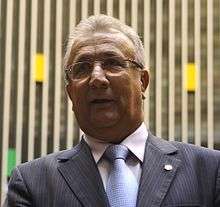 Jackson Barreto It was a law student at the UFS,(1944–present): lawyer, politician, Vice-Governor (2011–present), Mayor of Aracaju (1986-88 / 1993-94) and Federal Deputy (2003 - 2011);
Jackson Barreto It was a law student at the UFS,(1944–present): lawyer, politician, Vice-Governor (2011–present), Mayor of Aracaju (1986-88 / 1993-94) and Federal Deputy (2003 - 2011); Mendonça Prado It was a law student at the UFS.
Mendonça Prado It was a law student at the UFS.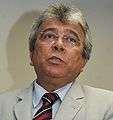 José Almeida Lima It was a law student at the UFS,(1953–present): lawyer, politician, Mayor of Aracaju (1994 - 1996), Senator (2003 - 2011) and Federal Deputy (2011 - 2015)
José Almeida Lima It was a law student at the UFS,(1953–present): lawyer, politician, Mayor of Aracaju (1994 - 1996), Senator (2003 - 2011) and Federal Deputy (2011 - 2015) João Augusto Gama Politician
João Augusto Gama Politician
UFS |Department of Engineering Science| Federal University of Sergipe
 Prof.Engineer Abraão Santos Silva,Is a former student of UFS
Prof.Engineer Abraão Santos Silva,Is a former student of UFS Farshad Yazdani is an Iranian electrical engineer,Professor of UFS
Farshad Yazdani is an Iranian electrical engineer,Professor of UFS Celso Satoshi Sakuraba is a Japanese engineer, Professor of UFS
Celso Satoshi Sakuraba is a Japanese engineer, Professor of UFS
UFS | Department of Physics | Federal University of Sergipe
 Prof.André Maurício Conceição de Souza Ph.D, is a Brazilian experimental Physicist,Professor of physics at the Federal University of Sergipe
Prof.André Maurício Conceição de Souza Ph.D, is a Brazilian experimental Physicist,Professor of physics at the Federal University of Sergipe
UFS | Department of Education | Federal University of Sergipe
 Ana Lúcia Vieira Menezes politician, Student of Pedagogy at UFS.
Ana Lúcia Vieira Menezes politician, Student of Pedagogy at UFS. José Iran Barbosa Filho Politician
José Iran Barbosa Filho Politician
External links
References
- ↑ http://divulgacoes.ufs.br/pagina/hist-ria-2518.html Retrieved 2012-09-04
- ↑ http://www.ufs.br/sites/default/files/ufs_em_numeros_2011-2.pdf Official statistics folder for the second semester / 2012
- ↑ http://divulgacoes.ufs.br/pagina/conhe-ufs-2517.html Retrieved 2012-09-04
- ↑ http://ead.unit.br/unit/historico.php
- ↑ As of 2011, over 29,000 students disputed a total of 5,490 vacancies. http://www.ccv.ufs.br/ccv/concursos/pss2012/files/INSCRITOS.pdf 2012 admission process
- ↑ http://ruf.folha.uol.com.br/rankings/rankingdeuniversidades/ 2012 ranking by RUF, Brazilian private media institution
- ↑ http://www.topuniversities.com/university-rankings/latin-american-university-rankings/2011?page=7 2011 ranking
- ↑ http://oficiais.ufs.br/sites/default/files/21/anuario_estatistico_2008_2010.pdf Official statistics book covering 2008 to 2010, Page 13
- ↑ http://www.infonet.com.br/cidade/ler.asp?id=31691&titulo=noticias Retrieved 2012-09-05
- ↑ http://www.ufs.br/sites/default/files/relatorio_gestao_2011.pdf Official infrastructure report from 2011
- ↑ http://www.ufs.br/conteudo/secret-rio-mec-elogia-expans-vagas-6326.html Retrieved 2012-09-05
- ↑ http://www.infonet.com.br/marcoscardoso/ler.asp?id=129068
- ↑ http://www.itnet.com.br/materia-15512-17 Retrieved 2012-09-05
- ↑ http://ruf.folha.uol.com.br/rankings/universidades/universidade-federal-de-sergipe-8434.shtml RUF's report on the university
- ↑ http://www.ufs.br/pagina/centros-1955.html Retrieved 2012-09-05
- ↑ http://www.sonoticias.com.br/noticias/3/137057/vestibular-faz-mal-a-educacao-critica-ministro Retrieved 2012-09-05
- ↑ http://g1.globo.com/vestibular-e-educacao/noticia/2011/05/educador-critica-tradicao-dos-exames-escolares-no-brasil.html Retrieved 2012-09-05
- ↑ http://www.fcc.org.br/pesquisa/publicacoes/es/artigos/129.pdf Analysis from Fundação Carlos Chagas about the vestibular system
- ↑ http://oficiais.ufs.br/sites/default/files/21/anuario_estatistico_2008_2010.pdf Pages 18 to 43
- ↑ http://www.ufs.br/conteudo/2013-ingresso-ufs-somente-ser-feito-por-desempenho-enem-3605.html Retrieved 2012-09-05
- ↑ http://www1.folha.uol.com.br/folha/educacao/ult305u403026.shtml Retrieved 2012-09-05
- ↑ http://www.ipcdigital.com/br/Noticias/Brasil/Movimento-pede-fim-das-cotas-raciais-no-Brasil Retrieved 2012-09-05
- ↑ http://stream.aljazeera.com/story/brazils-racial-quotas-0022211 Retrieved 2012-09-05
- ↑ http://g1.globo.com/bom-dia-brasil/noticia/2012/08/sistema-de-cotas-para-universidades-federais-e-sancionado-por-dilma.html Retrieved 2012-09-05
- ↑ http://codap.ufs.br/ CODAP official website, retrieved 2012-09-07
- ↑ http://www.ufs.br/conteudo/codap-9-melhor-escola-p-blica-brasil-segundo-ideb-7422.html Retrieved 2012-09-07
- ↑ http://educacao.uol.com.br/noticias/2012/08/14/consulte-a-nota-do-ideb-do-seu-estado-e-saiba-se-ele-atingiu-a-meta-proposta-pelo-mec.htm Retrieved 2012-09-07
- ↑ http://www.enemvirtual.com.br/melhores-escolas-de-sergipe-ranking-enem-2010/ Retrieved 2012-09-07
- ↑ http://educacao.uol.com.br/noticias/2011/09/12/enem-por-escola-confira-as-20-primeiras-colocadas-do-sergipe.htm Retrieved 2012-09-07
- ↑ http://pos.ufs.br/pagina/cursos-stricto-sensu-2869.html University's post-graduation website, retrieved 2012-09-06
- ↑ http://proest.ufs.br/pagina/resid-ncia-universit-ria-1441.html University's residency website, retrieved 2012-09-06
- ↑ http://www.infonet.com.br/educacao/ler.asp?id=86743&titulo=educacao Retrieved 2012-09-04
- ↑ http://www.infonet.com.br/educacao/ler.asp?id=99365&titulo=educacao Retrieved 2012-09-04
- ↑ http://sites.ufs.br/bibliotecas/2011/09/27/curso-de-direito-da-ufs-obtem-melhor-aprovacao-do-brasil-no-exame-da-oab/ Retrieved 2012-09-04
- ↑ http://www.jornaldacidade.net/noticia-leitura/235/34282/ufs-fica-em-quarto-em-exame-da-oab.html Retrieved 2012-09-04
- ↑ http://www.oabse.org.br/764/curso-de-direito-da-ufs-recebe-selo-oab-de-qualidade.html Retrieved 2012-09-04
- ↑ http://proest.ufs.br/sites/default/files/6/panfleto_ufs_em_movimento1.pdf "UFS em Movimento" informative folder
Coordinates: 10°55′29″S 37°06′02″W / 10.9248113°S 37.1005511°W